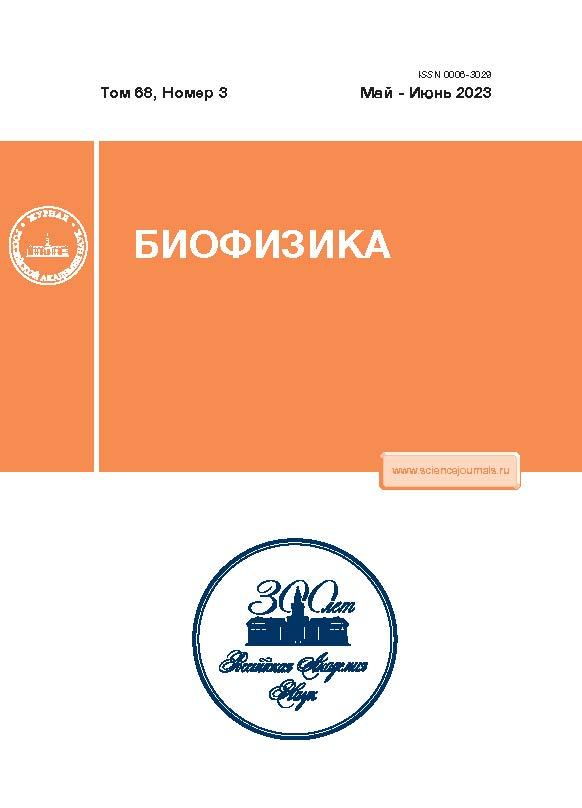Genetic determinants of flax genome integrity
- Authors: Kanapin A.A1, Samsonova A.A1
-
Affiliations:
- St. Petersburg State University
- Issue: Vol 68, No 3 (2023)
- Pages: 501-505
- Section: Articles
- URL: https://journals.rcsi.science/0006-3029/article/view/144451
- DOI: https://doi.org/10.31857/S0006302923030110
- EDN: https://elibrary.ru/FRUWBQ
- ID: 144451
Cite item
Abstract
Recent advances in high-throughput sequencing methods have enabled development of an innovative approach to evaluation of genome stability and integrity. The depth of the coverage signal at a particular location of the genome may indicate the loss of DNA integrity in the region. In this work, the previously developed metric of local genome integrity that estimates the uniformity of coverage signal is considered a quantitative trait and a search for genetic variants associated with the uniformity of coverage signal in flax genome is performed. In particular, quantitative trait locus (xQTL) analyses (i.e., x Quantitiave Trait Loci, where x is the designation of an arbitrary quantitative characteristic associated with a particular genome region; for example, the level of gene expression, the degree of ribosome coverage, etc.) have been applied to identify genomic regions that most likely contribute to loss of genome integrity and are, probably, involved in the maintenance of genome stability. The analysis carried out using information on whole-genome sequence assembly of 100 flax samples enabled identification of genes potentially implicated in genome integrity maintenance in flax and, possibly, in plants in general and also revealed novel processes associated with the maintenance of genome integrity.
About the authors
A. A Kanapin
St. Petersburg State UniversitySt. Petersburg, Russia
A. A Samsonova
St. Petersburg State University
Email: a.samsonova@spbu.ru
St. Petersburg, Russia
References
- Z. N. Lye, M. D. Purugganan, Trends Plant Sci., 24, 352 (2019).
- Y. Yuan, P. E. Bayer, J. Batley, and D. Edwards, Plant Biotechnol. J., 19, 2153 (2021).
- S. Nik-Zainal, Genome Med., 11, 1 (2019).
- A. Janssen, S. U. Colmenares, and G. H. Karpen, Annu. Rev. Cell Dev. Biol., 34, 265 (2018).
- S. S. Ho, A. E. Urban, and R. E. Mills, Nat. Rev. Genet., 1 (2019).
- E. M. Kass, M. E. Moynahan, and M. Jasin, MOL-CEL, 62, 777 (2016).
- N. Andor, C. C. Maley, and H. P. Ji, Cancer Res., 77, 2179 (2017).
- A. Dolatabadian, D. A. Patel, D. Edwards, and J. Batley, Theor. Appl. Genet., 130, 2479 (2017).
- A. Abyzov, A. E. Urban, M. Snyder, and M. Gerstein, Genome Res., 21, 974 (2011).
- V. Boeva, et al., Bioinformatics, 28, 423 (2011).
- A. Samsonova, et al., Int. J. Mol. Sci., 22, 2665 (2021).
- D. Arends, et al., Bioinformatics, 28, 1042 (2012).
- B. Ng, et al., Nat. Neurosci., 20, 1 (2017).
- Y. Ma, H. Klein, and P. L. D. Jager, Brain Pathol., 30, 984 (2020).
- М. А. Дук, А. А. Канапин, А. А. Самсонова и др., Биофизика, 67, 234 (2022).
- H. Li and R. Durbin, Bioinformatics, 26, 589 (2010).
- D. Tello, et al., Bioinformatics, 35, 4716 (2019).
- O. Stegle, L. Parts, M. Piipari, et al., Nat. Protoc., 7, 500 (2012).
- H. Ongen, et al., Nat.Commun., 8, 1 (2017).
- H. Fang, B. Knezevic, K. L. Burnham, and J. C. Knight, Genome Med., 8, 1 (2016).
- J. Mistry, et al., Nucl. Acids Res., 49, gkaa913 (2020).
- J.-M. Zhou and Y. Zhang, Cell, 181, 978 (2020).
- D. Lapin, O. Johanndrees, Z. Wu, et al., Plant Cell, 34, 1479 (2022).
- S. J. Riedl, W. Li, Y. Chao, et al., Nature, 434, 926 (2005).
- N. Boes, K. Schreiber, E. Hartig, et al., J. Bacteriol., 188, 6529 (2006).
- D. D. Leipe, Y. I. Wolf, E. V. Koonin, and L. Aravind, J. Mol. Biol., 317, 41 (2002).








